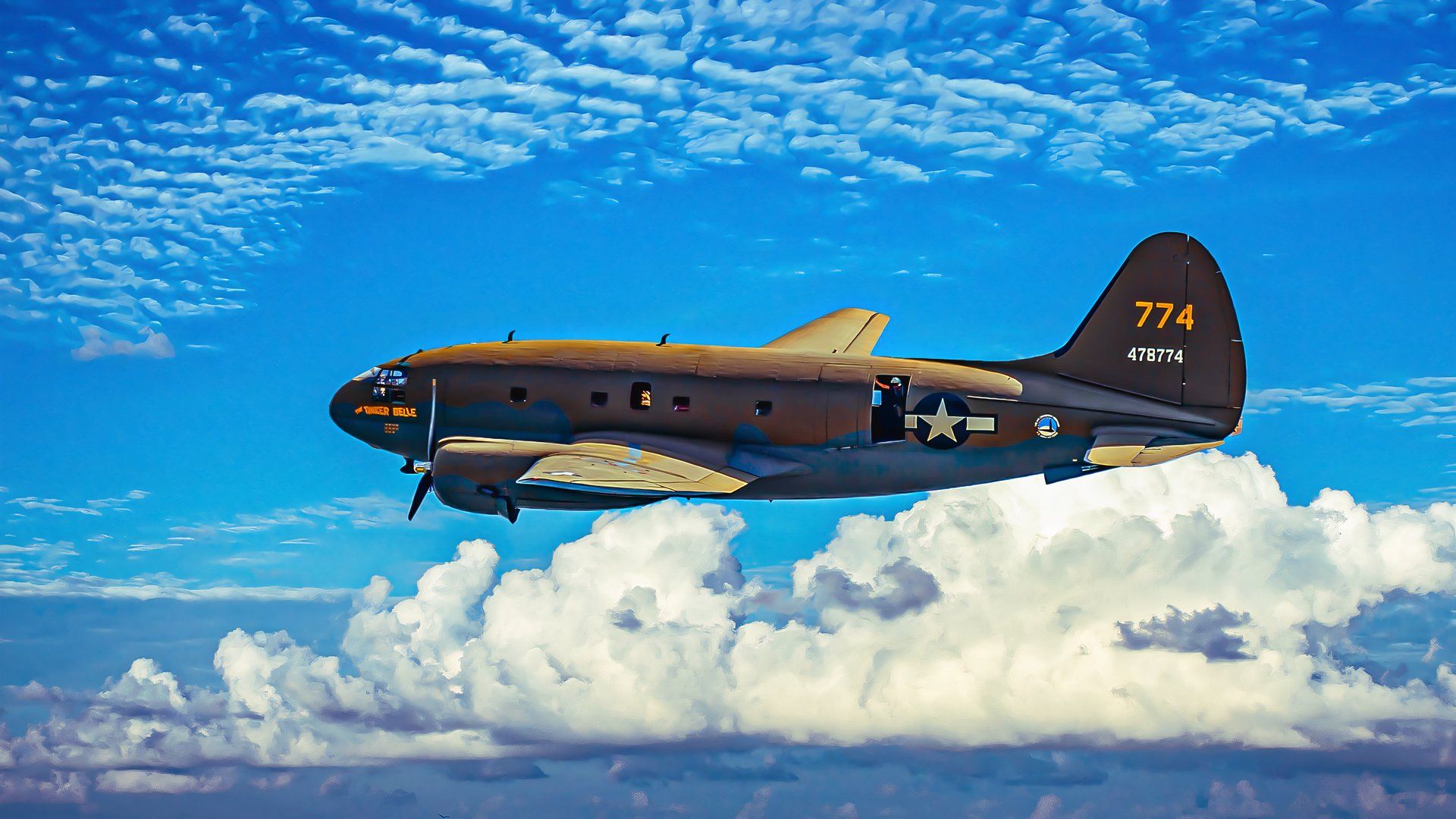Summary The C-46 Commando flew in World War II & transitioned to civilian cargo. Military role: important in Asia-Pacific, "Flying the Hump" over the Himalayas. Despite challenges in handling & maintenance, C-46 served into the 21st century.
The Curtiss C-46 Commando played a major role in World War II Allied operations in Asia and the Pacific. It is an aircraft with a rich history. The Curtiss-Wright company built over 3,000 of the type for the war effort.

Many survived the end of WII hostilities and returned to see civilian service , transitioning from military personnel and matériel transport to civilian cargo aircraft. The C-46 continued to see government service as a covert operations platform all the way up to the Vietnam War and beyond. Here is a detailed look at its development, military service, and post-war use: Development and design The Curtiss C-46 Commando originated from the Curtiss CW-20 , initially conceived in 1940 as a pressurized high-altitude airliner.
Designed to compete with the Douglas DC-4 and Boeing 307 Stratoliner, the C-46 was intended for luxury passenger service, featuring a spacious cabin with potential sleeping berths. The onset of WWII shifted its role from a civilian airliner to a military transport aircraft. The C-46 is a low-wing, twin-engine aircraft powered by two Pratt & Whitney R-2800-51 radial engines, each producing 2,000 horsepower.
It was the largest twin-engine aircraft of its time, with a wingspan of 108 feet and a maximum takeoff weight of 45,000 pounds. The plane was capable of carrying up to 15,000 pounds of cargo. Military service in WWII During WWII, the C-46 Commando was utilized primarily as a cargo and troop transport aircraft.
It filled a crucial niche as a high-altitude heavy hauler capable of operating from rough, remote airstrips. The aircraft was particularly valuable in the China-Burma-India ("CBI") theater, where it was used extensively to fly supplies over the Himalayan Mountains, a mission known as "Flying the Hump." The C-46 was the only Allied aircraft capable of handling the harsh conditions of this route, including violent weather and high altitudes.
In the Pacific, the C-46 proved its ability to carry twice the cargo volume of the C-47 Skytrain, the civilian Douglas DC-3—an excellent workhorse in its own right—and its capability to operate from hastily constructed island airstrips. However, its lack of self-sealing fuel tanks made it vulnerable to anti-aircraft fire, leading to significant losses during operations such as the paratrooper drop in Operation Varsity in March 1945. Post-war use and legacy After WWII, the surplus of C-46 aircraft found limited use as passenger airliners due to their high operating costs compared to the more economical C-47.
Instead, the C-46 became a workhorse in the cargo sector, particularly in remote and rugged regions such as the Arctic and South America. Its robust design and large cargo capacity made it ideal for transporting goods to areas with limited infrastructure. Buffalo Airways , based in Yellowknife, NWT Canada, operates a C-46 cargo aircraft today.
Another is regularly seen on the Kenai Airport (PAEN) ramp in south-central Alaska. The C-46 was also used in covert operations, notably by the CIA's Air America during the Cold War. Despite its challenges, the C-46 Commando's versatility and durability have allowed it to remain in service in niche roles well into the 21st century.
Pilots say the aircraft was complex to fly. The Curtiss C-46 Commando is considered challenging to fly for several reasons, primarily related to its design and handling characteristics: Directional Control Issues : The C-46 had poor directional control at low speeds, particularly during takeoff and landing. Its rudder was ineffective, making maintaining a straight path on the runway challenging.
Pilots often had to use differential engine power to compensate for this lack of control, which could be tricky and required significant skill. Maintenance Challenges : The aircraft was known for being a "maintenance nightmare." It required extensive man-hours for maintenance and modifications, with over 721 changes needed in production models by November 1943.
These issues contributed to its reputation as a "plumber's nightmare" among maintenance crews. It also lacked self-sealing fuel tanks, making it vulnerable to fuel leaks, enemy flack, and inflight fires. Safety Concerns : The C-46 was prone to airborne explosions, with 31 reported instances between May 1943 and March 1945.
These explosions were often due to fuel system leaks and the risk of vapor lock or carburetor icing, which made the aircraft dangerous to operate under certain conditions. Handling at Slow Speeds : The C-46 feels cumbersome and requires a lot of handling, especially at slow speeds. Its large size and weight contributed to a sluggish response, making it feel more like maneuvering a large, unwieldy object than a nimble aircraft.
Pilots have described the C-46 as having the low-speed handling characteristics of a bull elk on ice. Overall, while the C-46 Commando was a valuable asset during WWII due to its cargo capacity and versatility, its handling and maintenance issues made it a challenging aircraft to fly and maintain. The Commando's transition from military transport to civilian cargo aircraft highlights its adaptability and enduring utility, making it a significant player in aviation history.
Curtiss C-46 Commando Role Military transport aircraft First flight 26 March 1940 National origin United States Manufacturers Curtiss-Wright, Higgins Aircraft Primary users United States Army Air Forces, United States Air Force, United States Marine Corps, United States Navy Number built 3,181 Current status Active in limited civilian use The C-46 had a short but fascinating life at the former US-based legacy carrier..



















